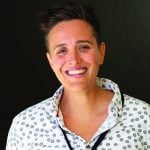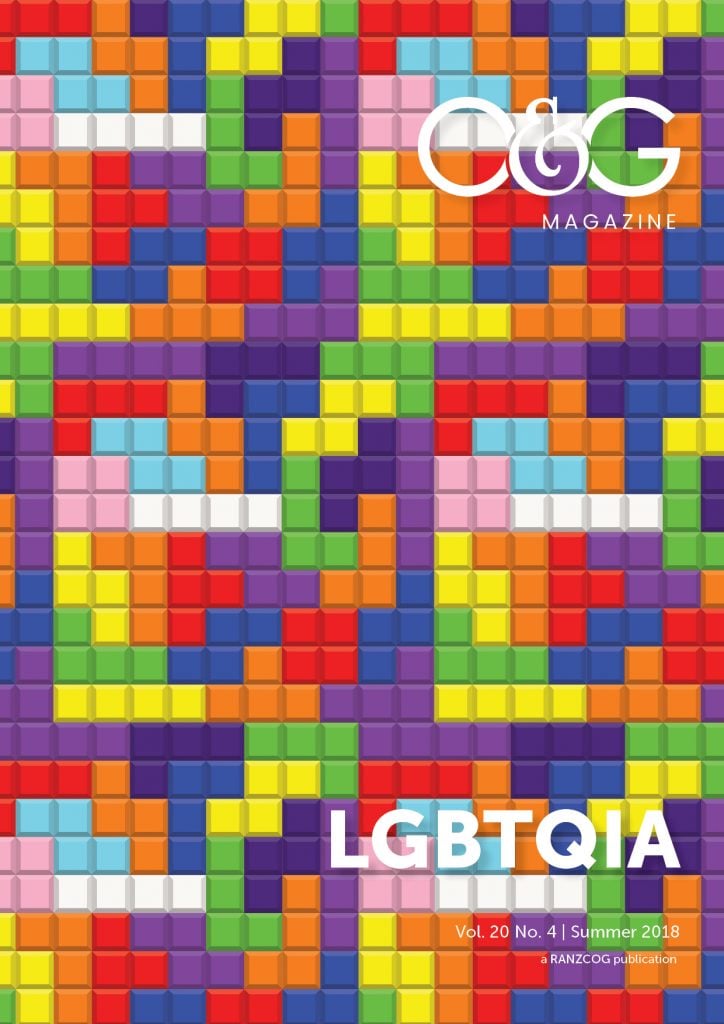I’ve never seen myself in the medical curriculum. Over the years, we’ve parsed hundreds of medical conditions, thousands of hypothetical patients, but I’ve never caught a glimpse of myself as anything other than a statistic.
I am the one in five same-sex-attracted Australians who have contemplated taking their lives, one in three who have self-harmed and been diagnosed or treated for depression.1 We learn these statistics because they matter and because they are true. However, we are so much more than dehumanised stereotypes trotted out around tired tropes of mental health, sex, drugs and HIV.
LGBTI content gets very little attention in medical school; an average of 0–5 hours in preclinical years, mostly in the form of lectures with a focus on sexual history-taking or differences between sexual behaviour and identity.2 3 Teaching on gender is sparser still. Often, this content is not taught by, or in consultation with, gay, bi, lesbian, trans or non-binary, or intersex people. It is tokenistic, overly pathologising or reductive, and can be delivered in a way that makes sex and gender diverse students feel exposed, embarrassed, ashamed and marginalised.
While some examples may be overtly problematic (classroom debates around the ethics of same-sex couples having access to Medicare-funded IVF treatments, dressing male clinical simulation mannequins in lingerie for a laugh), often, it’s the more subtle slights or acts of erasure that serve to underscore medicine’s tacit endorsement of the status quo, ‘a hidden curriculum of heteronormativity repeatedly positioning some sexualities as normal, natural and obvious, while others (are) quietly excluded’.4
Most medical students can recall a few classes, mostly directed at LGBTQI-specific issues, overwhelmingly as part of sexual development and mental health modules, or teaching about HIV, domestic violence and substance abuse. Inclusion of an incidentally same-sex couple or queer/non-cis/questioning person in problem-based learning is exceptionally rare, contributing to an implicit bias among graduating doctors that equates sex and gender diversity with ‘otherness’, and alienates students who identify as different.
‘It is often taught from a deficit perspective, what is wrong with LGBTI people. Often, gay men’s health is purely framed around an HIV positive case; on lesbian health there is usually nothing,’ says Dr Ruth McNair, a leading Australian and international academic in LGBTQI health. ‘LGBT students and doctors report feeling out of place in the dominant culture of medicine, not able to speak out about poor patient care for fear of impacts on their careers. It remains a highly conservative profession.’
Fear around discrimination keeps LGBTQI patients in the closet (an estimated one in five people will withhold their sexuality from a regular GP).5 This is mirrored among sex and gender diverse medical students, where research suggests one in three will conceal their identity, particularly from faculty and clinical staff.6
This is unsurprising, when 75 per cent of non-heterosexual medical students report experiencing or witnessing adverse treatment during their training7 in a rigidly hierarchical, relentlessly competitive environment that discourages dissent or complaint.
‘They make it seem orthogonal to the medical experience,’ says one University of Melbourne medical student of her sexuality. ‘I don’t explicitly out myself to consultants or team members … when doctors make The Gays seem like some “other” group of patients.’
Another medical student from Deakin University describes feeling like an outsider in a world resolutely oblivious to privilege and identity politics. ‘Being the sole “out” queer woman in a cohort of very heterosexual individuals is alienating. You don’t realise how much tension you carry around every day just keeping your experiences to yourself.’
The association between many medical schools and Catholic hospitals poses particular difficulties for LGBTQI students, who may feel uncomfortable, or even unsafe, being open about their identity. Trans students experience misgendering, even deadnaming, while one Catholic university has banned medical students from forming a queer group.
‘As a queer woman on placement at a Catholic hospital, it’s very difficult to feel comfortable identifying myself. Outside of the hospital environment, I am very “out and proud”, and most of my medical student peers are supportive of me, but even wearing a rainbow pin or lanyard around the hospital feels like a risk,’ one student says.
It is often left to sex and gender diverse students to advocate for inclusion, improvements to the curriculum and to educate their peers, something that takes an enormous personal toll.
We are asked to ‘come out’, again and again, to account for and explain our most intimately-held parts, to defend and justify our difference, to expose ourselves to voyeuristic curiosity, well-meaning sympathy, dismissive eye-rolling, even hostility. I have cried in hospital bathrooms and quiet corners of labs after a thoughtless or overtly homophobic remark; some days I just can’t face it again.
‘The onus should no longer be on queer medical students themselves to provide education for their peers, organise lectures, advocate for patients and for changes in the curriculum, and support each other,’ says Lauren Taylor, national coordinator of the Australian Medical Students’ Association (AMSA) Queer Project. ‘There needs to be a unified commitment, from the top down, that LGBTIQ health is an important part of the medical curriculum that should be standardised and assessed, and that queer medical students need to be supported.’
AMSA, in 2016, formally called on the Australian Medical Council (AMA) to incorporate cultural competence and respectful care of LGBTQI communities into its accreditation standards for medical schools, and for this to be made a core objective for graduates.8
For now, such matters are left to the discretion of individual universities, according to Helen Craig, CEO of Medical Deans Australia and New Zealand, the peak body representing medical schools across the two countries. ‘The approach taken by each medical school to incorporating issues such as LGBTQI health varies depending on how the school structures their medical program, curricula and clinical placements,’ Craig says.
Students who receive inadequate training are less confident seeing LGBTQI patients and lack basic skills around terminology, gender-affirming care and finding population-specific resources.9 They are more likely to hold negative, stigmatising views and it is the patient who suffers.
Beyond the formative years of medical school, few specialty colleges place an emphasis on LGBTQI health within their training programs, the Royal Australian College of General Practitioners10 being a notable exception. Angela Magarry, CEO of the Council of Presidents of Medical Colleges, says this is a matter for individual specialties.
Last year’s marriage equality debate may have been something of a watershed moment, with an unprecedented number of colleges and institutions coming out in support, including a vocal campaign from the AMA.11
Though there is no active push for changes to training at present, AMA federal councillor and outgoing RANZCOG president Prof Steve Robson says ‘… it is quite possible that this issue could move forward again in due course … the AMA strongly supports diversity in the medical workforce and, indeed, all workforces and the community. We are utterly opposed to any form of discrimination’. For Dr Ruth McNair, there is a ‘long way to go’.
Discrimination is about so much more than explicit displays of bullying and harassment. It takes root in the silences of omission and assumption, and flourishes in spaces left by the unspoken and unseen.
If we are to shift the statistics, we must look to the stories beyond. After all, ‘medicine is a social science’, said Virchow, and ‘as the science of human beings, has the obligation to point out problems and attempt their theoretical solution.’
References
- National LGBTI Health Alliance. Snapshot of Mental Health and Suicide Prevention Statistics for LGBTI People. 2016. Available from: https://lgbtihealth.org.au/wp-content/uploads/2016/07/SNAPSHOT-Mental-Health-and-Suicide-Prevention-Outcomes-for-LGBTI-people-and-communities.pdf.
- Sanchez AA, Southgate E, Rogers G, Duvivier RJ. Inclusion of lesbian, gay, bisexual, transgender, queer and intersex health in Australian and New Zealand medical education. LGBT Health 2017;4(4):295-303.
- Taylor O, Rapsey CM, Treharne GJ. Sexuality and gender identity teaching within preclinical medical training in New Zealand: content, attitudes and barriers. The New Zealand Medical Journal 2018; 131(1477):35-44.
- Murphy M. Hiding in plain sight: the production of heteronormativity in medical education. Journal of Contemporary Ethnography 2016;45(3):256-289.
- Leonard W, Pitts M, Mitchell A, et al. Private Lives 2: The second national survey of the health and wellbeing of gay, lesbian, bisexual and transgender (GLBT) Australians. 2012. Available from: www.glhv.org.au/sites/default/files/PrivateLives2Report.pdf.
- Mansh M, White W, Gee-Tong L, et al. Sexual and gender minority identity disclosure during undergraduate medical education: ‘In the closet’ in medical school. Academic Medicine 2015;90(5):634-644.
- Szubert A-K, Gibberd A, Buisson E, et al. Mistreatment in Australian medical education: a student-led scoping of experiences. Australian Medical Student Journal 2018:8(2).
- Australian Medical Students’ Association. Policy Document: Lesbian, Gay, Bisexual, Transgender, Intersex and Queer (LGBTQI) Health Policy. 2016. Available from: www.amsa.org.au/sites/amsa.org.au/files/LGBTIQ%20Health%20%282016%29.pdf.
- Parameshwaran V, Cockbain BC, Hillyard M, Price JR. Is the lack of specific lesbian, gay, bisexual, transgender and queer/questioning (LGBTQ) health care education in medical school a cause for concern? Evidence from a survey of knowledge and practice among UK medical students. Journal of Homosexuality 2017;64(3):367-381.
- RACGP. Sex, sexuality, gender diversity and health contextual unit. In Curriculum for Australian General Practice 2016. Available from: www.racgp.org.au/Education/Curriculum/Sex,-sexuality,-gender-diversity-and-health.
- AMA Position Statement: Marriage Equality, 2017. Available from: https://ama.com.au/sites/default/files/documents/Marriage%20Equality%20-%202017%20-%20AMA%20position%20statement_0.pdf.




Leave a Reply